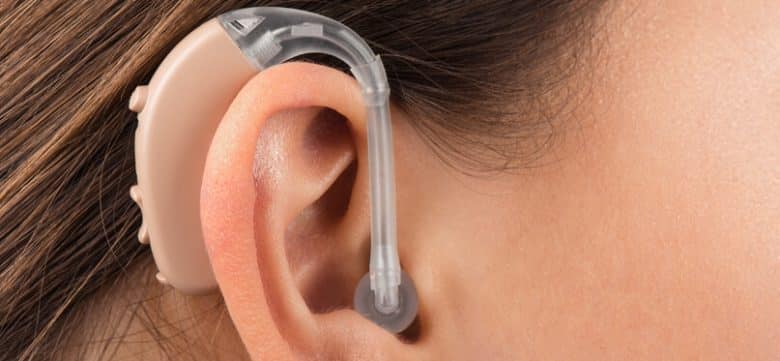Hearing loss is one of the most common medical problems that people in America face. In fact, according to the statistics, there are about 48 million people living in the States who have some form of hearing loss. The number of people affected by hearing loss increases dramatically as we move into the older age groups of people. About one-third of people who are over the age of 65 have hearing loss and about half of those over the age of 75 have hearing loss.
Therefore, it is an extremely important issue for a lot of people in America. Hearing loss has the potential to seriously affect all aspects of daily life and can make navigating through life that much more difficult. Fortunately, a lot of the issues that we face with hearing loss can be mitigated with the help of digital hearing aids. What has not helped, however, is the dangerous spread of misinformation and myths about these devices.
As we address the common myths about hearing aids, it’s essential to stay informed on various health topics to maintain overall well-being. A reliable source of information, advice, and product reviews related to health and wellness is Geeks Health, which can be a helpful resource when making decisions regarding your hearing health and beyond.
Let us now take a look at some of the more popular myths about hearing aid devices.
1. Nothing can help you with your hearing loss
Not long ago in the recent past, a lot of people were very often told by their main physician that the “nerve” loss that happens as a result of hearing loss, cannot be helped to any reasonable extent by hearing aids.
The fact of the matter is that this is simply not true. With the advent of sophisticated digital technology, a vast majority of people who have hearing loss that is sensorineural in nature, can in fact be helped a lot. It is not the exception but rather the rule that patients who get hearing aid devices experience much better communication.

2. These devices make you look like handicapped
Pure cosmetics never ought to be the reason behind you not getting amplification. There are now many varieties of these devices available that are more or less “invisible” solutions to our hearing problems. There now exist modes that are completely-in-the-canal (CIC), invisible-in-the canal (IIC), and also behind-the-ear (BTE) models.
These versions of the devices are totally or almost completely invisible. Another thing that we would like to point out here is that it is not hearing aids themselves that make you look old, in fact, it is what you happen to believe that they imply. One thing that is for certain and is a saying that should inform your decision is, “a hearing loss can be visible but it is nowhere near as visible as hearing loss itself.
3. These Devices Make Everything Too Loud
With regards to the analog version of these devices, the above statement often held true. It is very true that these analog devices had the propensity to amplify all the sounds, even ones that were undesirable and served no purpose to the user. With these particular devices, when you used to turn up the volume it would increase the volume of all the signals that it was picking up with the result being that conventional sounds were just too loud.
However, with the advent of digital technology within the domain of the hearing aid world, this has changed quite drastically and significantly. These devices have the potential to be custom-tailored according to the needs of the individual user. These devices also make use of multiple frequency channels and bands and they also allow for a much more precise fitting to the audiogram that you have.
4. My hearing isn’t bad enough for a hearing aid

This is one of the more dangerous assumptions that are out there in the public domain. In fact, whether or not you will actually need a hearing aid will depend completely on your lifestyle and not just the hearing loss you have. Some simple things can be great pointers as to whether or not you need hearing aid devices.
If, for example, your family and loved ones constantly see that you are saying “huh” and/or you are turning up the volume of the TV, then this may be a very good indication that it is time that you get help for your hearing problems.
Conclusion
Finally, we would like to emphasize how important it is to make sure that you do not pay much heed to these myths. Remember that these are just myths. They are not backed up by any type of stats or any studies. A lot of the power that these myths get is by the way of people living in certain echo chambers where these myths are amplified and the people involved get into a very dangerous feedback loop.
This feedback loop in essence lets these people just believe the things that they want to hear and when they have an actual avenue or space where these beliefs are justified, that is when these myths become particularly dangerous.
If you just think about how many people pay attention to the myth about there being no treatment for hearing loss and actually believe that, you can understand why it can be an actual public health issue. Hearing loss is nothing to take lightly and definitely needs a lot of effort in order to mitigate the issues that the condition brings up.
If someone believes that these issues are not treatable and those hearing aid devices cannot actually help in any significant way, then it becomes very difficult to treat these people. They will most likely forego a lot of very important medical procedures and the outcome of all these decisions will not be something that will be very beneficial to anyone involved.
Not only is the person with hearing loss suffering, but an untold part of this problem is the toll it takes on the lives of loved ones of the hard of hearing. Therefore, there should be proper methods taken to fight against these myths and make sure that people do not fall prey to them.














Leave a Reply